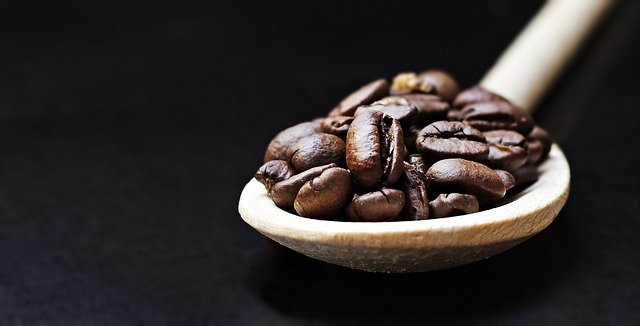The Discovery of Coffee
There’s the tale of Kaldi, a goat herder who saw one of his herd gnawing on coffee cherries, which has been widely repeated but is unsubstantiated. The goat started dancing soon after. Kaldi nibbled several cherries, following his animal’s advice, and felt equally stimulated. Kaldi transports the coffee cherries to a nearby monastery, where they are thrown into a fire by the monks.
Rather from destroying the Devil’s instrument, the fire roasts it, resulting in the first cup of coffee.
The plant’s probable geographic birthplace, Ethiopia or Yemen, has been established. Because the name sounds close to the Kaffa area of Ethiopia, it is often assumed that the term coffee originated there. Men of some nomadic tribes began consuming a crushed coffee cherry/ghee (butter) concoction to fuel themselves before conflicts circa 600 CE. Crushed cherries were utilized by Muslim monks during all-night prayer vigils to have comparable energizing effects (before Islam had a “official” stance).
Coffee & Religion
Coffee’s popularity hasn’t always been so high. Religious organizations had to come to terms with and accept this novel beverage. First, Islam debated whether the drink should be viewed like alcohol, as a banned, euphoric, yet intoxicating drink to avoid, or as a mild, healthy, refreshing substitute for alcohol. Coffee eventually triumphed over tea in the Islamic world.
Coffee eventually triumphed throughout the Islamic world.
It was probably originally used as a hot beverage in Turkey about the eleventh century, when other drinks brewed from roasted herbs and teas became popular. Turkey aided the spread of coffee throughout the Christian/European world due to its proximity and active trading with Europeans.
The Catholic Church, which seldom addresses dietary issues, got involved in the debate over whether Christians should consume this novel beverage. When pushed for an explanation, Clement VIII, the reigning Pope, insisted on taking a drink. He declared coffee to be a delectable and healthy beverage for Christians almost immediately.
Coffee was certified kosher by Jewish law, which commonly proclaims goods kosher (in conformity with religious norms and practices).
The Publication of Coffee
In present-day Saudi Arabia, the 1500s saw the birth of the world’s first coffeehouses. Peasants could now drink coffee without fear of being persecuted, thanks to the church’s approval. The Kaveh Kanes were public spaces that provided a safe haven for Muslim males. Similarly, male bonding took place at Europe’s coffeehouses, which encouraged commercial and political activity. Coffee’s popularity grew, and with it came more power. Coffee was so important to the Turkish in the 1500s that a woman may divorce her husband if he didn’t supply it for her; it was as important as food and shelter.
No More Coffee Plants For the Arabian Peninsula alone
Coffee, which originated in Yemen and Ethiopia, had become the preferred beverage of Europeans by the late 1600s. However, during a period when maritime transportation was booming and colonialism was at its height, nations aspired to take control of their coffee consumption by procuring beans from their own countries. Independence and new industries sprang from this control.
Attempts were made initially by the Dutch in the mid-1600s. They launched a full-scale coffee business in Ceylon (modern-day Sri Lanka) after they took control of the island in 1658; they now had territory on which to cultivate coffee. In 1699, Dutch colonialists brought coffee plant cuttings from India to Java and started producing coffee in Indonesia.
Surprisingly, the Dutch did not protect their coffee plant cuttings as well as they might have, keeping a few at the Amsterdam Botanical Garden and even giving some away as presents to other European countries.
Meet the coffee seedlings who will be the coffee trees of future.
If the generosity of the Dutch astounded historians, King Louis XIV of France’s generosity was even more astounding. Cuttings from his single cutting (a gift from the Dutch government in 1714) were given to several French possessions in the New World. To transport the cuts to French colonies, King Louis assigned military officer Captain Gabriel Mathieu de Clieu. It wasn’t going to be easy. Battles with pirates, a spy on board, storms, drought, and heat were all recounted in De Clieu’s chronicle. However, he tended to the shoot at all times. Indeed, he said that only because he shared his water supplies with his plant did it survive the grueling journey.
De Clieu had to make the solitary plant live and thrive when the boat arrived in Martinique, the selected location for France’s first planting. He was successful in persuading local farmers to grow coffee as their major crop rather than chocolate. De Clieu was given the governorship of Martinique by King Louis, who had previously expressed reservations about him. Meanwhile, de Clieu’s plant propagated by cuttings.
Coffee was soon available on all of the nearby Caribbean islands, spawning a new business.
Brazil’s conquest of the valuable coffee plant, which it would use to construct its own empire, is similarly spectacular. According to one tale, a Brazilian lieutenant seduces the governor of French Guiana’s wife in order to steal a coffee plant cutting allegedly hidden inside a bouquet of flowers. The whole Brazilian coffee business was born out of this idea in 1827.
Coffee and the Industrial Revolution are two things that come to mind while thinking about coffee.
The Industrial Revolution, which attempted to centralize every operation, caused a transition in coffee production from small batch roasters to big roasters, as well as the development of a packaging technique that allowed for advance roasting and grinding—the coffee can. In 1865, John Arbuckle, a coffee pioneer, developed the first canned coffee.
The emphasis of the new consumer era was on convenience. Most urban customers in America and Europe bought roasted and ground coffee cans by the 1920s. Coffee production was becoming more simpler as technology advanced.
More coffee was produced in bigger quantities by commercial coffee roasters, while less was made by home coffee roasters.
Commercial coffee roasters were able to produce more coffee in fewer batches and in less time. Suddenly, a small number of people could supply the requirements of the majority when it came to coffee.
The freshness of coffee suffered in this new period. In the 1930s, Nestle promoted instant coffee, which resulted in the greatest loss of taste. Coffee, like so many other items before it, became a commodity, with convenience taking precedence above flavor.
ENGLISH TEA & FRENCH COFFEE
Although France has a rich history of coffee culture, England is more recognized for its tea. This may sound unusual, particularly given the early history of coffeehouses in England. It’s a complicated tale. Colonial coffee cultivation was established by both France and England. In the Caribbean and in Africa’s Ivory Coast, France planted; in Ceylon, England planted (modern-day Sri Lanka).
Ceylon used to be a rich coffee-growing country. However, leaf rust, a fungus that kills coffee plants, was a major problem. Ceylon instead planted tea, which was resistant to the leaf rust virus, instead of fresh coffee plantings. Tea became trendy and patriotic in England. While France’s coffee was of inferior quality than England’s, it had plenty of good milk. France became recognized for coffee throughout time, whereas England (and its colonies) became known for tea.
The Discovery of Coffee
7 Things To Give In A Relationship To Keep It Going How to Make a Successful Career Change in 10 Easy StepsCoffee joined the ranks of TV dinners, canned fruits and vegetables, and other processed goods in the 1950s and 1960s. Producing nations began blending the finest coffee with the rest. Some wonderful coffee managed to remain away from the crowds, but that was the exception. The existence of a refrigerator in a house affected coffee just as much, allowing soda and juices to compete with quick satisfaction items.
The Seventies and Later
In the 1970s, the emphasis turned back to flavor from convenience. Specialty foods were popular among baby boomers, who were born between 1944 and 1961, as part of a return to natural, self-absorbed diets and more free time. Coffee was included in the new emphasis, which included every facet of home cooking. The introduction of air-assisted small batch coffee roasters coincided with this consumer demand.
Freshly roasted coffee beans may now be found at retail malls.
Plus, the beatnik-reading-poetry-in-urban-coffeehouses image appealed to Baby Boomers, who had grown up with beatniks reading poetry in urban coffeehouses. Coffeehouse culture arose in locations such as Seattle and Boston in the United States. Berkeley, California–based The speciality coffee revolution is typically linked to Alfred Peet, a Dutch immigrant who created Peet’s Coffee and Tea.
However, the resurgence of social coffeehouses was accompanied by the emergence of speciality coffee.
Small-batch roasters started looking at how to get the finest beans. Coffee-growing nations favored selling beans from country to country rather than from farm to roaster throughout the nineteenth and most of the twentieth centuries. New friendships were created. Green coffee customers started buying micro-lots and requested specific growers’ beans. Small farmers began to get accolades and prizes for their beans.
The old-fashioned process of separating beans from cherries. This technique can be accomplished with bigger equipment, but this one works just as well and is portable. In the foreground, notice the delicious cherries ready to be picked.
Specialty coffee equipment has also undergone a transformation. The electric percolator, which was formerly a standard in most American homes and was accused by many aficionados of ruining the finer coffee flavors, was supplanted by automatic drip brewing equipment.
Coffee: Commodity vs. Specialty
Today’s commercial coffee production may seem to be one large mass of beans, but it is often divided into commodity and speciality coffee across the globe.
Coffee sold as a commodity ranges from low-cost cafe coffee to coffee used to add caffeine extract to aspirin. The flavor of this coffee is secondary to its goal, which is to give a brown caffeine beverage. It may seem unromantic, but comprehending this component is essential to comprehending coffee and its vocabulary.
With flavor as the major emphasis, specialty coffee is cultivated, processed, exported, roasted, marketed, and brewed. Specialty coffee prices vary widely because they take into account both manufacturing costs and taste, which is a subjective factor.
The price of speciality coffee is affected by the overall commodities market circumstances.
Between commodity and speciality coffees, there are no botanical or legal differences. We concentrate on speciality coffees in this book, not because we’re pretentious, but because it’s more practical.
Botanical Classifications and Coffee Plants
Let’s take a look at the coffee plant in detail. Coffee is a plant that belongs to the Rubiaceae family. In today’s international market, only three of the seventy-three identified species—Arabica, Robusta, and Liberica—have economic relevance.
They produce three to twelve tons per hectare (2.5 acres) (2.8 to 10.9 metric tons). To produce progeny, each cultivar needs a particular number of trees.
The initial plant identified and grown for today’s coffee beverage, Arabica Arabica (Coffea arabica), most likely originated in present-day Ethiopia. Arabica has the most nuanced and appealing tastes, although having the least caffeine naturally.
Arabica trees generally reach a height of twelve to twenty feet (3.7 to 6 meters).
The majority of Arabica coffee is picked by hand. This is partially owing to its cultivation on hilly ground that is normally inaccessible by machine, but largely due to the fact that a human coffee picker selects the ripest beans using a ladder or a hook. The finest farms harvest numerous times during the season—three is common—to guarantee ripe beans are selected.
beans.
Arabica comes in two varieties:
Bourbon and Typica. Other subvarieties, called as cultivars, are produced from these two varieties.
Bourbon
Many consider the coffee produced by this Arabica heritage to be of the highest quality in the world. The issue is that Bourbon necessitates a lot of area and attention, is disease-prone, and has a limited life cycle since its trees take longer to yield fruit. Bourbon produces about a third more beans than Typica, and its cherries develop quicker, but they are more delicate. Bourbon is best grown at altitudes of 3,500 to 6,500 feet (1,067 to 1,981 m).
Typica
This cultivar has a cone shape and grows on a slant, it is sometimes referred to as the original coffee variety. It grows well (slightly better than Bourbon) and is taller than other varietals, reaching ten to thirteen feet (3 to 4 m) in height, although it produces lesser yields. Consider Bourbon and Typica to be equivalent for the purposes of this book.
Caturra
This cultivar was derived from Bourbon cuttings and identified in Brazil as a resistant yet high-maintenance shrub. It thrives at altitudes below 3,500 feet (1,067 meters), with cherries that are simple to pluck and grow near to the ground. Many well-known coffee-growing nations, such as Costa Rica, cultivate Caturra virtually exclusively.
Arabica Varietals that aren’t Arabica
The terroir, temperature, and disease resistance of a coffee plantation determine which cultivars are planted, with productivity and yield coming in second. Quality comes last, if at all, since a crop that refuses to grow isn’t a good harvest.
The following is a list of the major Arabica cultivars (along with Bourbon, Typica, and Caturra) and their fundamental characteristics:
Blue Mountain is a mountain in the United States.
The unusual Blue Mountain variety, which grows mostly in Jamaica, is said to be descended from Typica, however its precise origins are uncertain. Though its precise origins are uncertain, it is thought to be a descendant of Typica. It’s a long bean with a lot of taste and disease resistance, but it doesn’t grow well in other parts of the world. Blue Mountain thrives at elevations more than 5,000 feet (1,524 m).
Catimor
Catimor is a cultivar of the Timor cultivar that was produced in Portugal in the 1950s. It grows fast, generates excellent yields at mid-altitudes, and is resistant to rust, making it appealing to many growers. It’s a cross between Arabia and Robusta, and it’s not regarded the greatest coffee. It requires a lot of fertilizer and moisture.
Catuai
This hybrid is a cross between Caturra and Mundo novo, a hardy cultivar. It is windproof and strong, making it ideal for use in windy conditions. It, like Caturra, requires a lot of attention yet produces excellent coffee.
is a high-maintenance machine that makes excellent coffee.
Maragogype
This Typica descendent, which was initially discovered in Brazil, is larger and taller than heritage varieties. It doesn’t produce a lot of beans, but they’re big. Two of Mariogype’s offspring are more well-known. Pacamara is a hybrid of Paca and Paca that is cultivated in Panama. It has a huge size as well as a prize-winning scent and flavor. Geisha is an Ethiopian hybrid of Maragogype that was initially cultivated in the early twentieth century. It is praised by gourmets looking for a huge bean with a rich taste.
Comum Pache
This Guatemalan cultivar is most likely a descendant of Typica, albeit its coffee isn’t as good as Typica’s. At heights of 3,500 to 6,000 feet, this tough plant thrives (1,067 and 1,827 m).
Timor
Timor was said to have been found during the 1860s coffee blight and is named after an Indonesian island. It is also the parentage of the Catimor cultivar. It’s a hybrid of Arabica and Robusta. Timor is seen as a savior by some in the business, since it seems to combine the greatest Arabica flavor with Robusta’s disease resistance. Some, however, fear it because it has too little flavor and believe it to be Robusta masquerading as Arabica.
Arabica may have remained the world’s sole cultivated coffee had a dangerous plant disease not spread over several important coffee producing areas in the 1860s. Robusta and Liberica, two additional coffee genera, emerged instead.
Robusta
Robusta (Coffea canephora), which has double the caffeine concentration of Arabica and is disease resistant, was previously promoted as Arabica’s best alternative.
Robusta coffee trees are shorter, which makes picking the fruit simpler, and they need less space between trees, enabling more plants to be planted on a single plot. Robusta soon became a global commodity in terms of care and nutrition.
Robusta, on the other hand, lacks the taste complexity of Arabica.
There are some excellent Robustas, but they are on level with low-grade Arabica in terms of quality. In the United States and Europe, this coffee is marketed and exchanged as a commodity. In the United States and Europe, the finest kind is sold and exchanged like a commodity. The greatest are nearly entirely offered as espresso mixes. The body of the Robusta is its finest feature.
Liberica
As leaf rust infections ravaged Arabica coffee farms in the 1870s, author Francis Thurber prophesied that Liberica (Coffea liberica) would eventually replace Arabica.
His forecast was never realized. Liberica’s taste was inferior to that of the finest Arabica coffee, and its per-plant production was inferior to that of Robusta. Meanwhile, hardier Arabica varieties like Caturra took the place of the more fragile Bourbon growths.
Liberica is now thriving throughout Southeast Asia. A limited quantity of green is sometimes accessible online, but it has no significant commercial penetration in the US or Europe.





